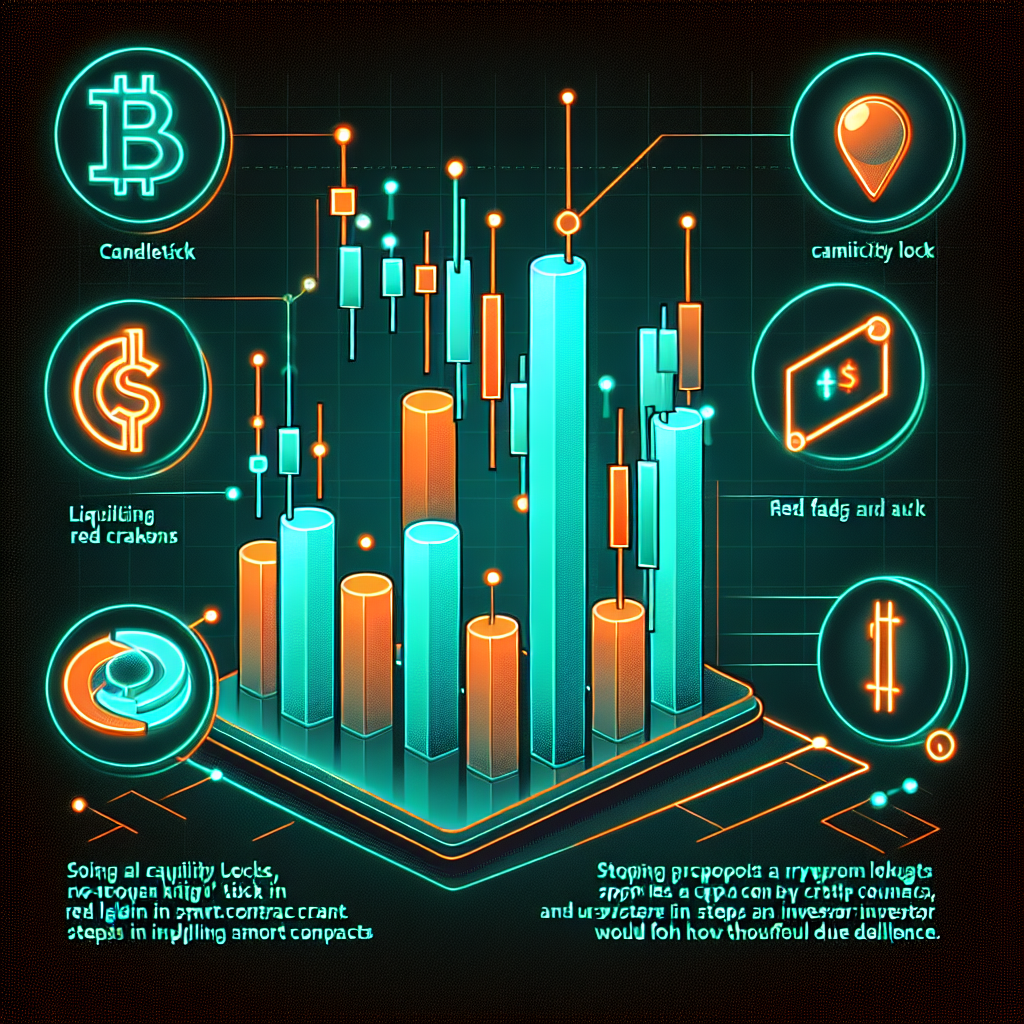How to Spot a Crypto Rug Pull: Liquidity Locks, Smart Contract Red Flags, and Investor Due Diligence Steps

Introduction
The meteoric rise of decentralized finance (DeFi) and meme tokens has opened doors to life-changing gains, but it has also attracted scammers looking for fast exits. One of the most destructive scams is the crypto rug pull, where developers abandon a project and run away with investor funds, often in a matter of minutes. Because rug pulls usually take place on permissionless blockchains, recovering stolen capital is nearly impossible. That makes prevention—spotting red flags before you click the swap button—your first and best line of defense. In this guide, you will learn how to identify liquidity locks, analyze smart contracts, and conduct investor due diligence so you can distinguish promising ventures from cleverly disguised traps.
What Is a Rug Pull?
A rug pull happens when project creators drain the liquidity pool or mint an enormous number of new tokens, instantly collapsing the market value and leaving holders with worthless coins. Rug pulls typically fall into two categories: hard rug pulls, where malicious code is embedded in the smart contract from day one, and soft rug pulls, where teams slowly dump their own holdings while continuing to hype the project. Both variants rely on investors overlooking tell-tale signs that a token is designed for a quick exit rather than sustainable growth. Understanding the mechanics behind liquidity provisioning and token distribution is therefore critical to spotting danger early.
Liquidity Locks: The First Checkpoint
Why Liquidity Matters
Decentralized exchanges (DEXs) like Uniswap or PancakeSwap depend on liquidity pools composed of both the project token and a base asset such as ETH or BNB. When liquidity is ample, investors can trade freely and price discovery is organic. If the founding team controls most of that liquidity and can withdraw it at will, they can instantly cripple the trading pair and disappear with the proceeds. That is why serious projects either renounce ownership of the liquidity pool or lock it in a time-locked smart contract.
How to Verify a Liquidity Lock
Checking a liquidity lock is easier than it sounds. Platforms such as Team Finance, Unicrypt, and Mudra show whether liquidity pool tokens have been deposited into a timelock contract, along with the unlock date and contract address. Copy the LP token address from the DEX and paste it into the locker’s search bar. If you cannot find the pair, or if the lock duration is counted in days rather than months or years, treat it as a serious red flag. Remember, a 24-hour lock is practically useless because the team can rug as soon as the countdown ends.
Smart Contract Red Flags
Read Before You Trust
Smart contracts are supposed to be trustless, but malicious code can hide in plain sight. Even if you are not a Solidity expert, there are straightforward methods to uncover risky functions. First, always locate the token’s verified contract on a block explorer like Etherscan or BscScan. Verified code allows you to review the logic, and explorers often highlight commonly abused functions in red.
Top Red Flags to Look For
- Mint Function Accessible to Owner: If the owner can mint unlimited new tokens, they can dilute your holdings into oblivion.
- Blacklist or Whitelist Controls: A contract that lets the owner block addresses from selling provides the tools for a hostile lock-in.
- Swap Fees Above 10%: Extremely high, changeable taxes can trap you by making exits prohibitively expensive.
- Hidden External Calls: Functions that point to other, unverified contracts may conceal siphoning mechanisms.
- Unrenounced Ownership: If the developer retains full authority, they can change fees, pause trading, or alter supply at any time.
Investor Due Diligence Steps
1. Vet the Team
Anonymous teams are not inherently malicious—Bitcoin itself was launched by a pseudonym—but anonymity removes legal accountability. Look for verifiable LinkedIn profiles, previous projects, or public AMA sessions that demonstrate expertise and good faith. If you can’t confirm who’s behind the contract, only invest funds you can afford to lose.
2. Audit the Code
Third-party smart contract audits from respected firms such as CertiK, PeckShield, or SolidProof drastically reduce the chance of hidden vulnerabilities. Read the audit summary, paying special attention to “major” and “critical” findings. If the audit is only “in progress” or performed by an unknown entity, demand more information.
3. Analyze Tokenomics
Healthy tokenomics distribute supply across community members, liquidity pools, staking rewards, and strategic reserves. Beware of allocations that grant the team more than 20% of circulating supply or unlock large tranches immediately after launch. Cliff periods and vesting schedules are your friends; they create long-term incentives rather than quick cash-outs.
4. Monitor Community Channels
Legitimate projects encourage tough questions in Telegram, Discord, and Twitter spaces. Censorship of critical comments, sudden ban waves, or spammy “moon soon” messages are clear signs of manipulation. Take time to read pinned messages, previous AMAs, and developer responses before you part with your capital.
5. Cross-Check Liquidity and Volume
Tools such as DEXTools, GeckoTerminal, and CoinMarketCap provide real-time liquidity and trading volume data. A project showing daily volume under 10% of its liquidity pool can become illiquid fast, trapping you even if the team does not rug. Conversely, volume that spikes unnaturally after coordinated social media hype may indicate wash trading intended to lure new buyers.
Conclusion
Crypto’s permissionless nature makes it one of the most exciting financial frontiers, but it also shifts the burden of protection onto the individual investor. By confirming proper liquidity locks, scrutinizing smart contract code, and following rigorous due diligence steps, you can dramatically decrease your exposure to rug pulls. No single metric guarantees safety, yet a combination of transparent teams, audited contracts, balanced tokenomics, and engaged communities forms a sturdy defense. Stay skeptical, keep learning, and never invest more than you can afford to lose—these rules will help ensure that the next big opportunity you chase is not just another cleverly disguised rug waiting to be pulled from under your feet.